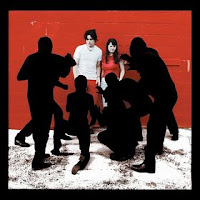3)
estaba pensando sobreviviendo con mi sister en New Jersey,
ella me dijo que es una vida buena alla
bien rica bien chevere ['nice'], Y voy! Puñeta!
4)
Trout Mask Replica was released in late 1969, but it still sounds like a signal retrieved from another time and dimension. Put more prosaically, it was a quantum leap from its predecessor in terms of structure and musical complexity. The difference is simply explained: Beefheart had recently had a piano installed in The Magic Band's communal rented house in Cunoga Park, San Fernando Valley, and began using it to generate new material. As he had no piano technique to speak of, the resulting 'compositions' were characterised by relatively short lines, inevitably in different metres. It fell to John French to capture the moment and transcribe these keyboard studies for the rest of the group to play. Building these heterogeneous layers into a structure and then coming up with drum parts to bind them together nearly drove him "nuts", French admits. The process wasn't made any smoother thanks to Beefheart deciding on a whim that parts should be played backwards.
The Magic Band now consisted of French and [Jeff] Cotton (rechristened Drumbo and Antennae Jimmy Semens respectively), plus two new recruits, teenagers Bill Harkleroad (aka Zoot Horn Rollo) on guitar and Mark Boston (Rockette Morton) on bass, who thought they were joining a psychedelic blues outfit. In the months leading up to the Trout Mask sessions, the group lived and rehearsed in the house in Cunoga Park in conditions of grinding poverty, with French, at least, practising for up to 14 hours a day. The group members were definitely malnourished at times, although rumours (or allegations) circulated by the group that Boston lived on dog food and was too weak to leave his bed sound mischievous. Fist fights broke out and the atmosphere soured as Beefheart became increasingly tyrannical. "A comic book Mansonish gestalt therapy kinda thing," is how Harkleroad remembers the time. The first track that was written on the piano with clear illustration of how it could be translated into parts for other instruments (in this case two guitars) was the astringent chamber piece "Dali's Car". Often, Beefheart's initial ideas would run out of steam, and the group had to make aleatoric leaps to complete the journey from A to B. "You guys know what to do," was his prosaic response to queries about how to tie up a particular song's loose ends. Gary Lucas (Beefheart's manager and guitarist later in his career) likened his compositional process to throwing a pack of cards into the air, taking a snapshot as they fell, then getting the musicians to reproduce the frozen moment.
"I got musicians who had never played before," explained Beefheart. "To get them past the 'I' consciousness, you know? That endless 'me, me, me'. Or do-re-mi, whatever that stuff is". This claim is fanciful to say the least; French and Harkleroad could both read music, and all four Magic Band members had been playing for years. But it is true to say that these musicians had never before played music like that on Trout Mask Replica. Although it travels a long way from its sources, Trout Mask Replica is still infused with the essence of the blues. In isolation, some of the guitar lines aren't so different from the stranger articulations of Robert Johnson or Hubert Sumlin, Howling Wolf's guitarist. In addition, Beefheart threaded the music's tangled structure with strands of rock 'n' roll, avant garde jazz and poetry that looked back at the American cultural mythos through a kaleidoscope. When questioned about the record in 1991 he said that he had been "trying to break up the mind in many different directions, causing them not to be able to fixate".
The majority of the 28 tracks were put down in about six hours at Whitney Studios in Glendale, Los Angeles, with Frank Zappa producing. With time added on for the vocal tracks and mixing, the record was completed in just four days.
13)
assim na terra como no céu
the ghost of 'lectricity







































